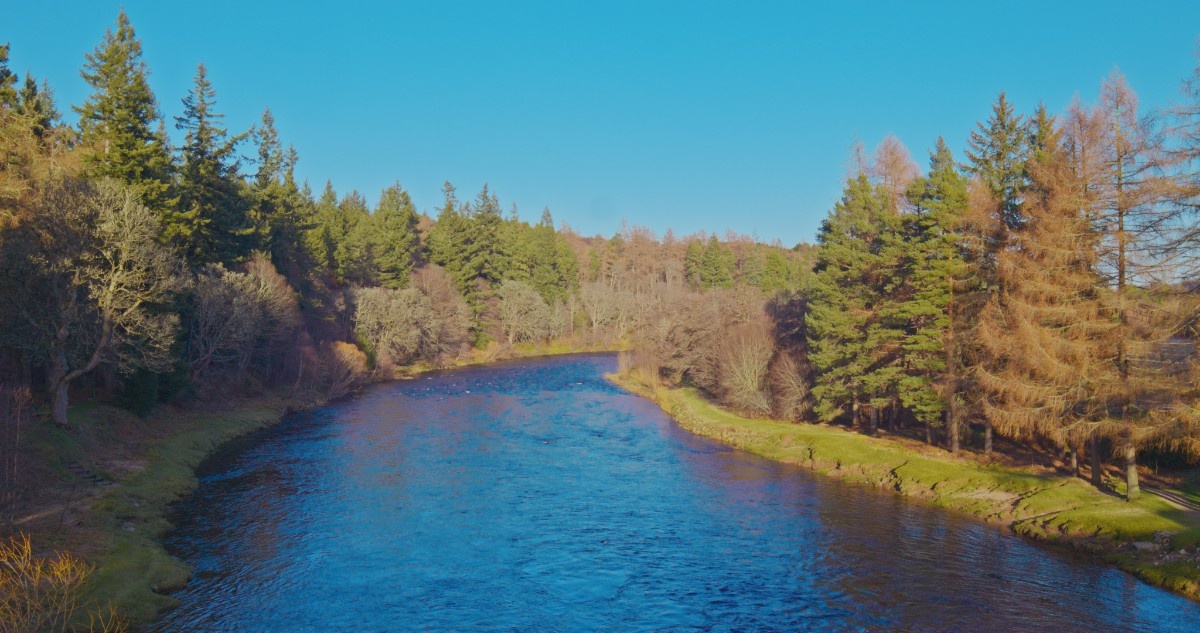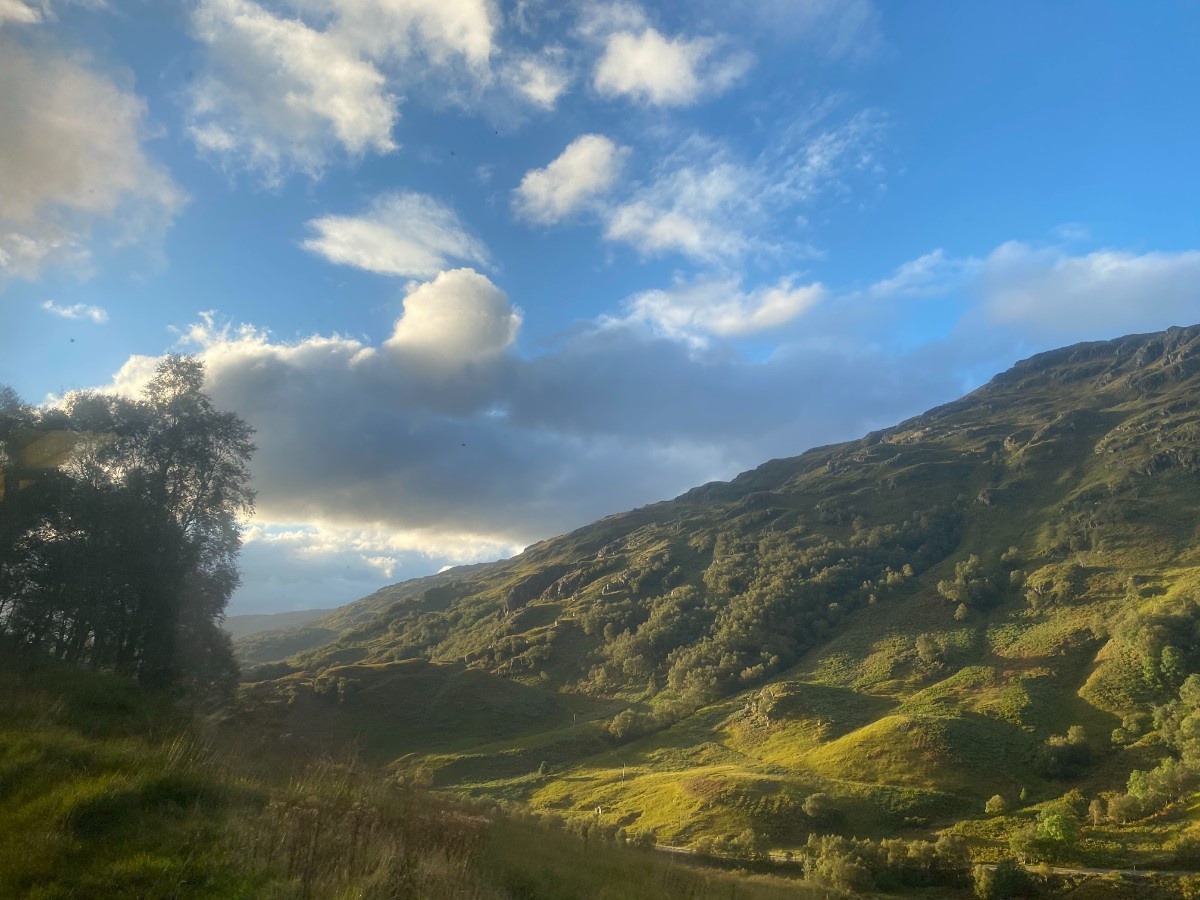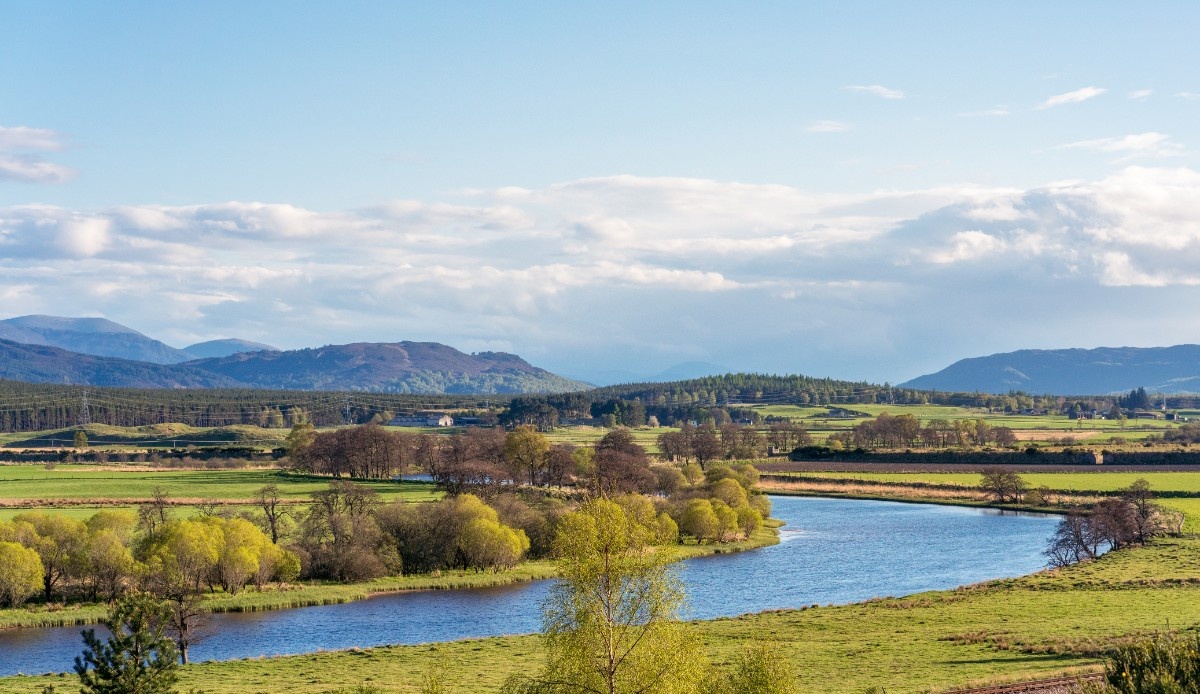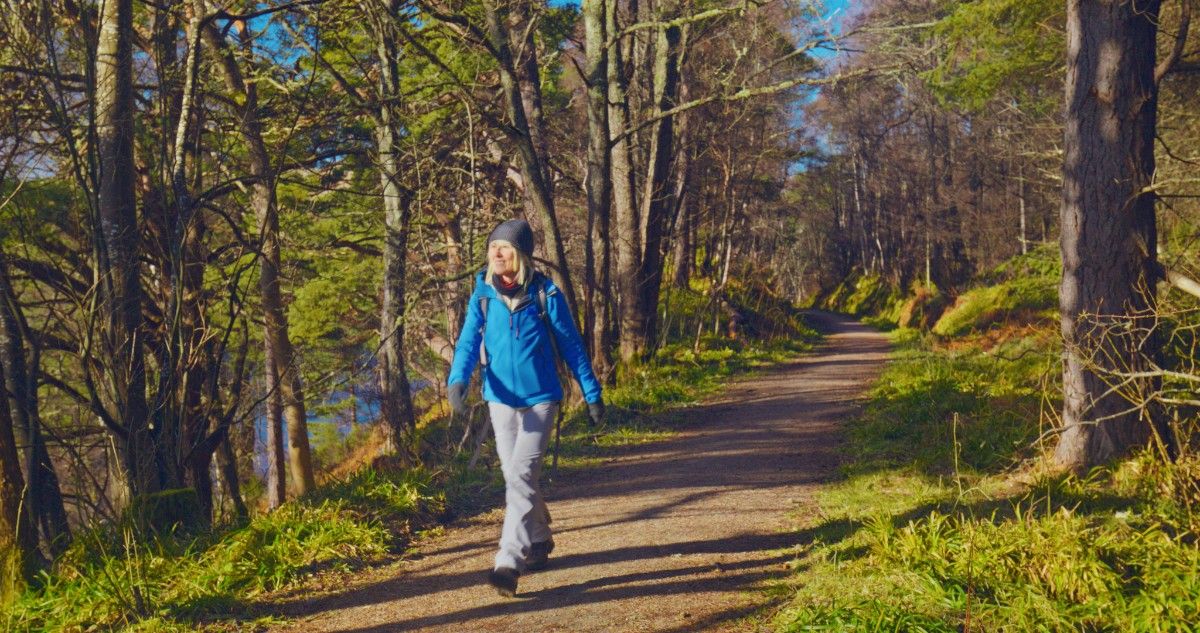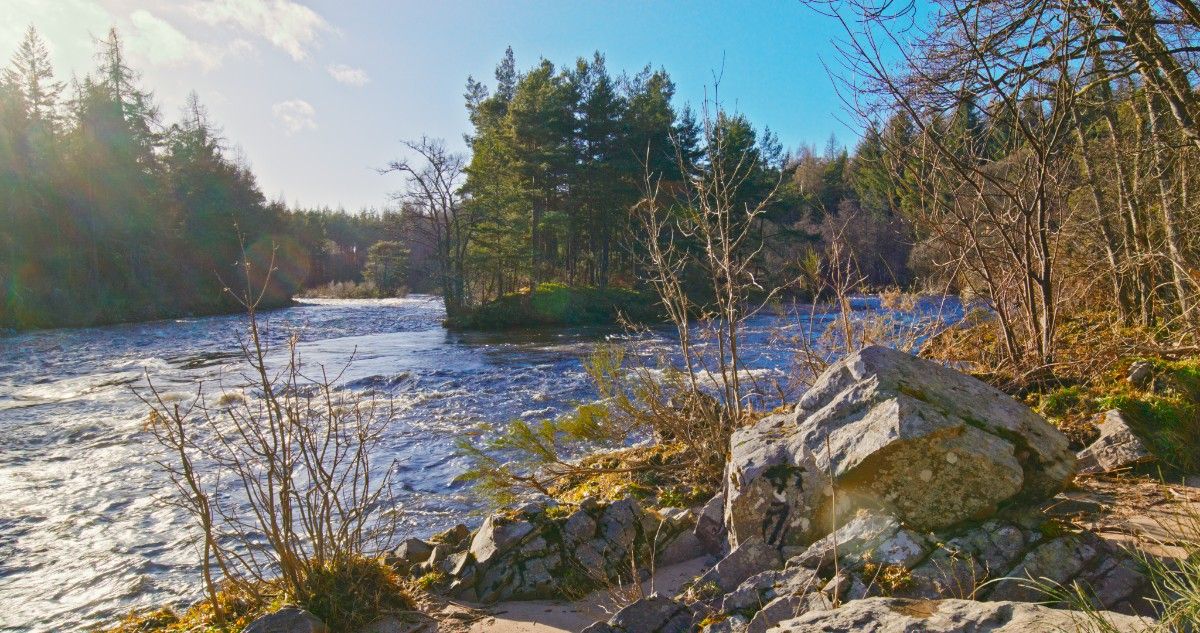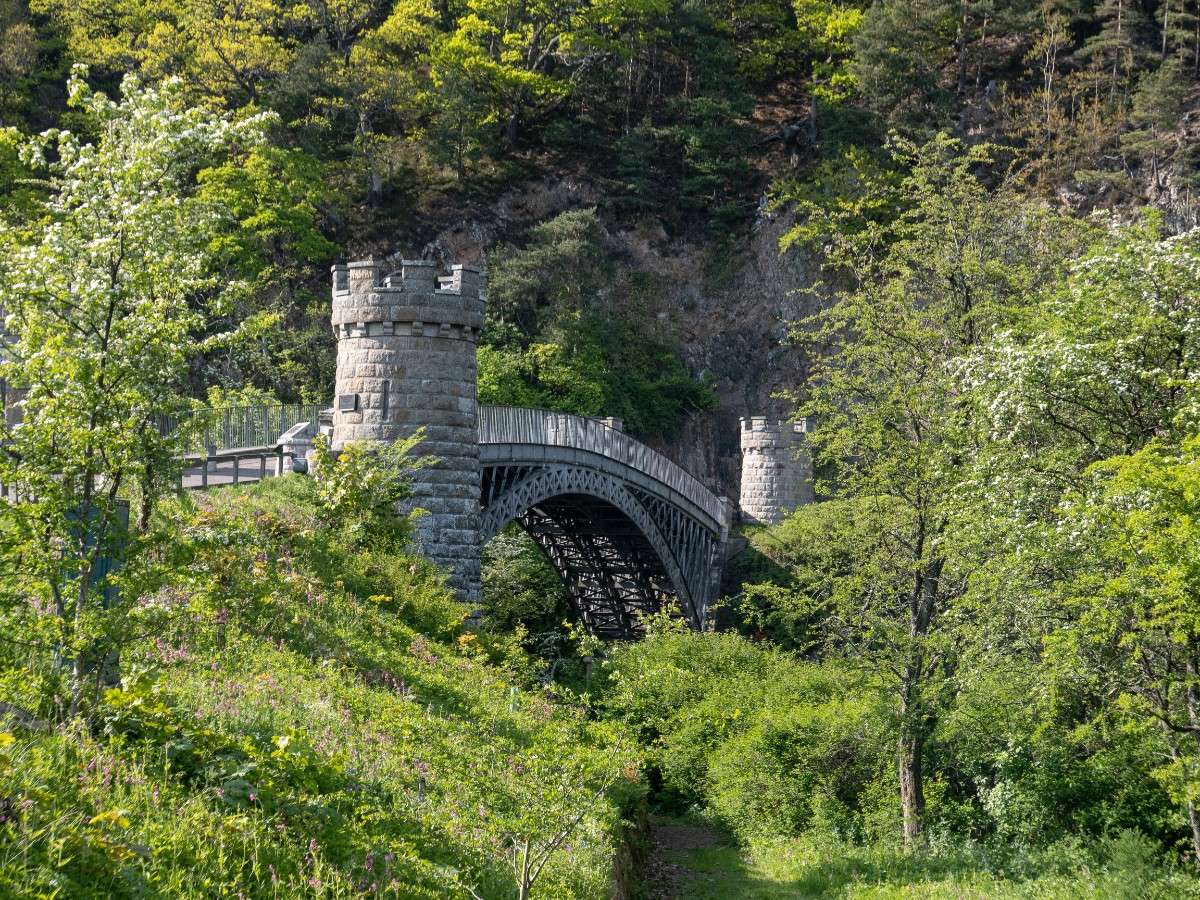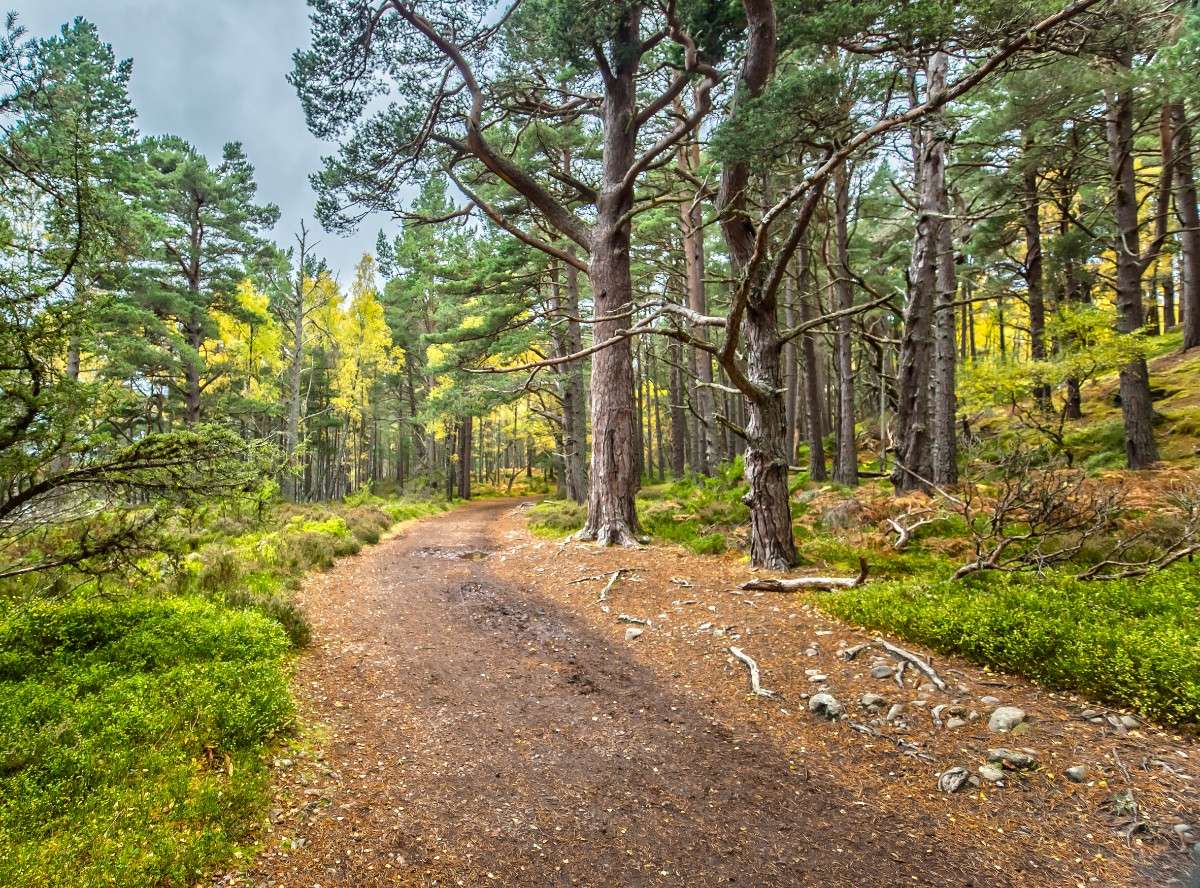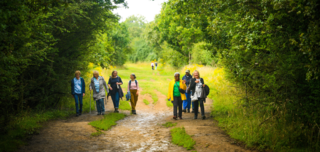Introduction to the Speyside Way
Overview of the Speyside Way
The Speyside Way is a captivating long-distance walking and cycling route that winds its way through the heart of Scotland's picturesque Speyside region. Spanning approximately 105 kilometres (65 miles), this well-established trail takes adventurers on a journey from the vibrant town of Buckie on the Moray coast to the bustling village of Aviemore in the Cairngorms National Park. The route traverses a diverse landscape, showcasing the area's natural beauty, rich history, and renowned whisky distilleries.
The Speyside Way was first opened in 1981 and has since become a popular destination for outdoor enthusiasts from around the world. The trail is divided into four main sections, each offering a unique experience and varying levels of difficulty. These sections include Buckie to Fochabers, Fochabers to Craigellachie, Craigellachie to Ballindalloch, and Ballindalloch to Aviemore.
One of the defining features of the Speyside Way is its relatively gentle terrain, making it suitable for walkers and cyclists of varying abilities. The route primarily follows disused railway lines, riverside paths, and quiet country roads, providing a safe and enjoyable experience for all. The well-maintained path is clearly signposted throughout, ensuring that navigating the trail is a straightforward and stress-free endeavour.
History and Heritage
The Speyside Way offers a fascinating glimpse into the region's rich industrial heritage. Along the route, walkers and cyclists will encounter remnants of the old railway infrastructure, such as viaducts, bridges, and restored stations, which serve as reminders of the area's past as a thriving transportation hub. These historical elements add an extra layer of interest to the journey, providing opportunities to learn about the region's development and the role the railways played in shaping its communities.
In addition to its historical significance, the Speyside Way is renowned for its stunning natural beauty. The trail meanders through a diverse array of landscapes, from the rugged coastline of the Moray Firth to the lush forests and rolling hills of the Speyside valley. Along the way, walkers and cyclists are treated to breathtaking views of the surrounding countryside, including the majestic Cairngorms mountain range and the serene waters of the River Spey.
The River Spey, which lends its name to the region and the trail, is a prominent feature of the Speyside Way. The route follows the river for much of its length, offering a tranquil and picturesque setting for outdoor enthusiasts to enjoy. The river is not only a visual delight but also supports a thriving ecosystem, with an abundance of wildlife, such as otters, ospreys, and Atlantic salmon, calling it home.
Whisky and the Speyside Way
One of the most appealing aspects of the Speyside Way is its proximity to the world-famous Speyside whisky distilleries. The region is known as the "Malt Whisky Capital of the World," and the trail passes by many of the most renowned distilleries, such as Glenfiddich, Macallan, and Aberlour. Walkers and cyclists can take advantage of the opportunity to visit these distilleries, learn about the whisky-making process, and sample some of the finest single malt whiskies in the world.
Accommodation options along the Speyside Way are plentiful and varied, catering to a range of preferences and budgets. Walkers and cyclists can choose from a mix of traditional bed and breakfasts, self-catering cottages, campsites, and luxury hotels. Many of these establishments are conveniently located along the route, ensuring that adventurers have a comfortable place to rest and recharge after a day of exploring.
The Speyside Way is a magnificent long-distance trail that offers a perfect blend of natural beauty, historical interest, and culinary delights. Whether you are an experienced walker or cyclist or simply looking for a unique way to explore this enchanting part of Scotland, the Speyside Way promises an unforgettable adventure through one of the country's most captivating regions.
The Speyside Way Map and Route Description
Overview of the Speyside Way Map
To fully appreciate the beauty and diversity of the Speyside Way, it is essential to understand the route and its various sections. A comprehensive Speyside Way map is an invaluable resource for anyone planning to embark on this incredible journey. The map not only provides a detailed overview of the trail but also highlights key points of interest, accommodation options, and transport links along the way.
The Speyside Way is typically divided into four main sections, each with its own unique character and challenges. The first section, from Buckie to Fochabers, is approximately 18 kilometres (11 miles) long and follows the picturesque coastline of the Moray Firth. This section of the route offers stunning views of the sea and the opportunity to spot a variety of seabirds and marine life. The path is relatively flat and well-maintained, making it an ideal starting point for those new to long-distance walking or cycling.
The second section of the Speyside Way, from Fochabers to Craigellachie, covers a distance of around 21 kilometres (13 miles). This stretch of the trail takes walkers and cyclists inland, following the banks of the River Spey through lush forests and rolling farmland. Along the way, adventurers will pass by several charming villages, such as Rothes and Aberlour, which offer a range of amenities and accommodation options. This section of the route is slightly more challenging than the first, with some gentle hills and rougher terrain, but it remains accessible to most reasonably fit individuals.
Craigellachie to Ballindalloch
The third section of the Speyside Way, from Craigellachie to Ballindalloch, is the longest at approximately 36 kilometres (22 miles). This part of the trail continues to follow the River Spey, passing through the heart of the Speyside whisky region. Walkers and cyclists will have the opportunity to visit some of the world's most famous distilleries, such as Macallan and Glenfiddich, and sample their renowned single malt whiskies. This section of the route is characterised by its stunning scenery, with the Cairngorms mountain range providing a spectacular backdrop to the journey. The terrain is varied, with a mix of riverside paths, forest tracks, and quiet country roads, offering a diverse and engaging experience for adventurers.
The final section of the Speyside Way, from Ballindalloch to Aviemore, is around 30 kilometres (19 miles) long and takes walkers and cyclists into the heart of the Cairngorms National Park. This part of the trail is arguably the most challenging, with some steeper ascents and rougher terrain, but it is also the most rewarding. The route passes through ancient Caledonian forests, alongside tranquil lochs, and offers breathtaking views of the surrounding mountains. The endpoint of the Speyside Way, Aviemore, is a popular tourist destination with a wide range of accommodation, dining, and outdoor activity options, making it the perfect place to celebrate the completion of this incredible journey.
Navigating the Speyside Way
One of the great advantages of the Speyside Way is its accessibility and the ease with which it can be navigated. The route is well-signposted throughout, with clear waymarkers guiding walkers and cyclists along the trail. Additionally, there are numerous access points along the way, allowing adventurers to join or leave the trail at various locations, depending on their preferred start and endpoint, time constraints, or fitness levels.
To make the most of your Speyside Way experience, it is essential to plan your journey carefully. This involves studying the Speyside Way map, identifying potential overnight stops, and arranging appropriate accommodation. It is also crucial to consider the time of year you plan to embark on your adventure, as weather conditions can vary significantly and impact your enjoyment of the trail. The summer months, particularly June to August, offer the best weather and the longest daylight hours, making them the most popular time to tackle the Speyside Way. However, spring and autumn can also be delightful, with fewer crowds and the added beauty of changing foliage.
The Speyside Way map is an essential tool for anyone planning to explore this magnificent long-distance trail. By understanding the route and its various sections, walkers and cyclists can tailor their journey to suit their interests, fitness levels, and time constraints. With its stunning scenery, rich history, and world-class whisky distilleries, the Speyside Way offers an unforgettable adventure through the heart of Scotland's most enchanting region.
Cycling the Speyside Way
Why Cycle the Speyside Way?
Cycling the Speyside Way has become an increasingly popular way to experience the beauty and charm of this iconic Scottish long-distance trail. While the route is perhaps better known as a walking path, it is also well-suited to cycling, offering a unique and exhilarating way to explore the stunning landscapes of the Speyside region.
One of the main advantages of cycling the Speyside Way is the ability to cover greater distances in a shorter amount of time compared to walking. This allows cyclists to experience more of the route's diverse scenery and attractions, from the rugged coastline of the Moray Firth to the majestic Cairngorms mountain range. Additionally, cycling provides a greater sense of freedom and flexibility, enabling adventurers to tailor their journey to their specific interests and preferences.
The Speyside Way cycle route largely follows the same path as the walking trail, with a few minor deviations to avoid particularly rough or steep sections. The majority of the route is on well-maintained, traffic-free paths, including disused railway lines and forest tracks, making it suitable for a wide range of cycling abilities. However, it is essential to note that some sections of the trail may be more challenging, particularly in wet weather conditions, and cyclists should be prepared for some occasional hills and rougher terrain.
Planning Your Speyside Way Cycling Adventure
To ensure a safe and enjoyable Speyside Way cycling experience, it is crucial to have the right equipment and to plan your journey carefully. A well-maintained hybrid or mountain bike with sturdy tyres is recommended, as it will provide the necessary stability and traction to handle the varied terrain. It is also essential to wear a helmet and to carry basic repair tools, such as a puncture repair kit and a spare inner tube, in case of any mechanical issues along the way.
When planning your Speyside Way cycle trip, it is important to consider your daily mileage and to identify suitable overnight stops along the route. While the entire trail can be completed in three to four days by experienced cyclists, those who prefer a more leisurely pace may opt to spread the journey over five to six days. This allows for ample time to explore the various attractions along the way, such as the world-famous Speyside whisky distilleries, and to enjoy the stunning scenery at a more relaxed pace.
Accommodation options along the Speyside Way are plentiful and varied, catering to a range of preferences and budgets. Many of the villages and towns along the route, such as Fochabers, Craigellachie, and Ballindalloch, offer a selection of bed and breakfasts, self-catering cottages, and campsites. These provide ideal overnight stops for cyclists, allowing them to rest and recharge before continuing their journey the following day.
Highlights of Cycling the Speyside Way
One of the highlights of cycling the Speyside Way is the opportunity to visit some of the world's most renowned whisky distilleries. The Speyside region is home to over half of Scotland's malt whisky distilleries, and many of these are located along or near the cycling route. Some notable distilleries include Glenfiddich, Macallan, and Aberlour, all of which offer guided tours and tastings. Cyclists can easily incorporate these visits into their itinerary, providing a fascinating insight into the region's rich whisky-making heritage.
In addition to the whisky distilleries, the Speyside Way cycle route offers a wealth of other attractions and points of interest. These include historic castles, such as Ballindalloch Castle and Drumin Castle, picturesque villages with charming cafes and shops, and stunning natural landmarks, like the Linn of Avon waterfall and the Craigellachie Bridge. By cycling the Speyside Way, adventurers have the opportunity to immerse themselves in the region's rich history, culture, and natural beauty, creating memories that will last a lifetime.
To help plan your Speyside Way cycling adventure, it is recommended to obtain a detailed Speyside Way cycle map. These maps provide a comprehensive overview of the route, highlighting key points of interest, accommodation options, and transport links. They also offer valuable information on the terrain, gradients, and distances between various points along the trail, enabling cyclists to plan their journey accordingly.
In conclusion, cycling the Speyside Way is a fantastic way to experience the beauty and charm of this iconic Scottish long-distance trail. With its stunning scenery, world-class whisky distilleries, and rich historical and cultural heritage, the Speyside Way offers a truly unforgettable cycling adventure. By planning carefully, having the right equipment, and taking the time to explore the many attractions along the way, cyclists can immerse themselves in the very best that this enchanting region has to offer.
The Speyside Way Cycle Map and Route Planning
The Importance of a Comprehensive Cycle Map
For those looking to experience the Speyside Way on two wheels, a comprehensive Speyside Way cycle map is an essential tool for planning and navigating the route. The map provides a detailed overview of the trail, highlighting key points of interest, accommodation options, and transport links, as well as offering valuable information on the terrain, gradients, and distances between various points along the way.
The Speyside Way cycle route largely follows the same path as the walking trail, with a few minor deviations to avoid particularly rough or steep sections. The route is approximately 130 kilometres (81 miles) in length, with the additional distance compared to the walking trail accounting for these detours and alternative paths. The majority of the route is on well-maintained, traffic-free paths, including disused railway lines and forest tracks, making it suitable for a wide range of cycling abilities.
When planning a Speyside Way cycling trip, it is important to consider several factors to ensure a safe, enjoyable, and successful journey. One of the first decisions to make is the duration of your trip and the daily distances you wish to cover. While experienced cyclists may be able to complete the route in three to four days, those preferring a more leisurely pace may opt to spread the journey over five to six days. This allows for ample time to explore the various attractions along the way and to fully appreciate the stunning scenery of the Speyside region.
Accommodation and Provisions
Accommodation is another key consideration when planning a Speyside Way cycling adventure. The route passes through several villages and towns that offer a range of lodging options, from budget-friendly campsites and hostels to comfortable bed and breakfasts and hotels. By consulting the Speyside Way cycle map, cyclists can identify suitable overnight stops and plan their itinerary accordingly, taking into account their preferred daily distances and any specific points of interest they wish to visit.
In addition to accommodation, cyclists should also consider their options for food and refreshments along the route. While many of the villages and towns along the Speyside Way offer a selection of cafes, restaurants, and shops, it is always a good idea to carry some snacks and water with you, especially on longer stretches of the trail where facilities may be limited. The Speyside Way cycle map can help identify potential resupply points and plan your provisions accordingly.
Equipment and Navigation
Another important aspect of planning a Speyside Way cycling trip is ensuring that you have the right equipment and gear. A well-maintained hybrid or mountain bike with sturdy tires is recommended, as it will provide the necessary stability and traction to handle the varied terrain. It is also essential to wear a helmet and to carry basic repair tools, such as a puncture repair kit and a spare inner tube, in case of any mechanical issues along the way. Additional items to consider include a waterproof jacket and trousers, a first-aid kit, a map and compass or GPS device, and a mobile phone for emergencies.
When it comes to navigating the Speyside Way cycle route, the map is an indispensable resource. The map clearly marks the main trail, as well as any alternative routes or detours, making it easy to follow the path and stay on track. It also highlights key landmarks, such as bridges, viaducts, and old railway stations, which serve as useful reference points and add an extra layer of interest to the journey.
One of the great advantages of cycling the Speyside Way is the flexibility it offers in terms of exploring the surrounding area. The Speyside Way cycle map identifies numerous side routes and trails that branch off from the main path, allowing cyclists to discover hidden gems and lesser-known attractions. For example, the map may highlight a scenic detour to a picturesque loch or a challenging mountain biking trail in the nearby Cairngorms National Park.
In addition to the practical information it provides, the Speyside Way cycle map also serves as a valuable source of inspiration and motivation. The map showcases the incredible diversity and beauty of the Speyside region, from the rugged coastline of the Moray Firth to the majestic peaks of the Cairngorms. It highlights the many natural and cultural wonders that await discovery along the route, from ancient Caledonian forests and cascading waterfalls to historic castles and world-renowned whisky distilleries.
A well-designed Speyside Way cycle map is an essential companion for anyone looking to explore this iconic route on two wheels. By providing detailed information on the terrain, distances, accommodation options, and points of interest along the way, the map enables cyclists to plan their journey with confidence and to make the most of their time in this stunning part of Scotland. Whether you are a seasoned cyclist or a casual rider, the Speyside Way offers an unforgettable adventure, and with the help of a comprehensive cycle map, you can ensure that your journey is as safe, enjoyable, and rewarding as possible.
The Speyside Way Ultra - A Test of Endurance
Overview of the Speyside Way Ultra
For those seeking an even greater challenge, the Speyside Way Ultra offers a true test of endurance and determination. This demanding long-distance race takes place annually, covering the entire length of the Speyside Way, from Buckie to Aviemore, in a single day. The event attracts runners from around the world, all eager to push their limits and experience the stunning beauty of the Speyside region in a unique and exhilarating way.
The Speyside Way Ultra is a 100-kilometre (62-mile) race that follows the same route as the walking and cycling trail. Participants set off from Buckie in the early hours of the morning, with the aim of reaching Aviemore before the cut-off time, typically set at around 24 hours after the start. The race is a true test of physical and mental strength, requiring runners to maintain a steady pace and to manage their energy levels carefully throughout the day.
One of the main challenges of the Speyside Way Ultra is the varied terrain that runners must navigate. The route encompasses a mix of coastal paths, forest tracks, riverside trails, and quiet country roads, each presenting its own unique set of difficulties. Runners must be prepared to tackle hills, rough ground, and potentially muddy or slippery conditions, depending on the weather. As such, it is essential for participants to have appropriate footwear and clothing, as well as a good level of fitness and endurance.
Nutrition and Hydration During the Ultra
Another significant challenge of the Speyside Way Ultra is the need to manage nutrition and hydration effectively throughout the race. With such a long distance to cover, runners must ensure that they consume enough calories and fluids to maintain their energy levels and prevent dehydration. The race organisers typically provide a number of aid stations along the route, offering water, sports drinks, and a variety of snacks. However, runners are also encouraged to carry their own supplies, particularly if they have specific dietary requirements or preferences.
In addition to the physical demands, the Speyside Way Ultra also presents a significant mental challenge. Running for such an extended period can be mentally taxing, requiring participants to maintain focus, motivation, and a positive attitude in the face of fatigue and discomfort. Many runners find that breaking the race down into smaller, more manageable sections can help to alleviate some of the mental strain, as can setting personal goals and milestones along the way.
Despite the challenges, the Speyside Way Ultra offers a truly unique and rewarding experience for those who take part. The stunning scenery of the Speyside region provides a constant source of inspiration and motivation, with runners passing through ancient forests, alongside tranquil rivers, and beneath the majestic Cairngorms mountain range. The sense of camaraderie among participants is also a significant factor, with runners often supporting and encouraging one another throughout the race.
Preparing for the Speyside Way Ultra
To participate in the Speyside Way Ultra, runners must typically meet certain entry requirements, such as having completed a previous ultra-marathon or demonstrating a suitable level of training and experience. The race organisers provide comprehensive information and support to help participants prepare for the event, including training plans, kit lists, and detailed route descriptions. Many runners also choose to familiarise themselves with the route beforehand, either by studying maps and guidebooks or by completing sections of the trail in training.
On race day, the atmosphere at the start line in Buckie is one of excitement and anticipation. Runners set off in the early hours of the morning, headlamps illuminating the path ahead as they begin their long journey towards Aviemore. Throughout the day, the field of runners spreads out along the route, each participant settling into their own rhythm and pace. The aid stations provide welcome opportunities for rest, refuelling, and encouragement from volunteers and supporters.
As the race progresses, the physical and mental challenges intensify, with runners digging deep to maintain their momentum and push through the inevitable moments of fatigue and doubt. The final stretch of the route, from Ballindalloch to Aviemore, is often considered the most challenging, with some steep ascents and rough terrain to navigate. However, the knowledge that the finish line is drawing closer provides a powerful motivator, spurring runners on to give their all in the closing stages of the race.
Crossing the finish line in Aviemore is a moment of immense pride and satisfaction for those who complete the Speyside Way Ultra. The sense of achievement, having conquered such a demanding and spectacular route, is truly unforgettable. Many runners describe the experience as life-changing, having pushed themselves beyond their perceived limits and discovered new depths of resilience and determination.
In conclusion, the Speyside Way Ultra is a remarkable event that showcases the very best of the Speyside region and the endurance running community. While the challenges of the race are significant, the rewards - both personal and scenic - are immeasurable. For those brave enough to take on this epic challenge, the Speyside Way Ultra offers a truly unforgettable experience, one that will stay with them for a lifetime.
Aviemore - The Gateway to the Cairngorms
Aviemore and the Cairngorms National Park
Aviemore, situated at the northern end of the Speyside Way, is a vibrant and bustling town that serves as the gateway to the stunning Cairngorms National Park. This popular tourist destination offers a wide range of attractions, activities, and amenities, making it the perfect base for exploring the surrounding area and the ideal endpoint for those completing the Speyside Way.
One of Aviemore's main draws is its proximity to the Cairngorms, the largest national park in the UK and home to some of Scotland's most spectacular landscapes. The park boasts an array of natural wonders, including ancient Caledonian forests, tranquil lochs, and towering mountain peaks, such as Ben Macdui and Cairn Gorm. These landscapes provide a stunning backdrop for outdoor enthusiasts, with countless opportunities for walking, cycling, wildlife watching, and more.
For those interested in winter sports, Aviemore is a true paradise. The town is home to the Cairngorm Mountain ski resort, which offers some of the best skiing and snowboarding in Scotland. With a variety of runs catering to all skill levels, as well as a dedicated snow school and equipment hire facilities, the resort attracts visitors from around the world throughout the winter months. Even during the summer, the resort remains a popular destination, with visitors taking advantage of the scenic funicular railway to reach the summit and enjoy breathtaking views across the Cairngorms.
Attractions and Activities in Aviemore
In addition to its outdoor pursuits, Aviemore offers a range of other attractions and activities to keep visitors entertained. The town is home to several fascinating museums and heritage centres, such as the Aviemore Highland Resort Museum and the Strathspey Railway Museum. These provide valuable insights into the region's rich history and culture, from its traditional whisky production to its long-standing connection with the railway industry.
For families, Aviemore offers plenty of fun and engaging activities. The Landmark Forest Adventure Park is a popular choice, with its mix of thrilling rides, treetop trails, and interactive exhibits. The park also boasts a unique Bamboozeleum, a puzzle-solving experience that challenges visitors to navigate a series of mind-bending rooms and escape before time runs out. Another family-friendly attraction is the Cairngorm Reindeer Centre, where visitors can learn about and interact with these charming creatures, which have been a part of the Cairngorms landscape for over 60 years.
Aviemore is also a haven for foodies, with a wide range of dining options to suit all tastes and budgets. From cosy cafes and traditional pubs to fine dining restaurants and speciality food shops, the town offers a true taste of the Highlands. Many establishments pride themselves on using locally-sourced, seasonal ingredients, showcasing the very best of Scottish produce. Visitors can sample classic dishes such as haggis, neeps, and tatties, or indulge in contemporary cuisine with a Highland twist.
Aviemore as the Speyside Way's Endpoint
For those completing the Speyside Way, Aviemore marks the end of an incredible journey and provides the perfect place to celebrate and reflect on their achievements. The town offers a wide range of accommodation options, from budget-friendly hostels and campsites to luxurious hotels and self-catering lodges. This ensures that there is something to suit every taste and budget, whether visitors are looking for a comfortable place to rest their head after a long day on the trail or a more indulgent base from which to explore the surrounding area.
Aviemore's location also makes it an ideal starting point for those looking to extend their adventure beyond the Speyside Way. The town is well-connected by public transport, with regular bus and train services linking it to other parts of the Highlands and beyond. This allows visitors to easily explore other nearby attractions, such as the historic city of Inverness or the stunning landscapes of the Isle of Skye.
Aviemore is a vital part of the Speyside Way experience, offering a wealth of attractions, activities, and amenities for visitors to enjoy. As the gateway to the Cairngorms National Park, the town provides unparalleled access to some of Scotland's most breathtaking landscapes, while its vibrant culture, delicious cuisine, and warm Highland hospitality make it a destination in its own right. Whether marking the end of a long-distance journey or serving as a base for further exploration, Aviemore is sure to leave a lasting impression on all who visit.
Walking the Speyside Way
The Joys of Walking the Speyside Way
Walking the Speyside Way is an immensely popular and rewarding way to experience the stunning beauty and rich heritage of the Scottish Highlands. The long-distance trail, which stretches approximately 105 kilometres (65 miles) from Buckie to Aviemore, offers walkers a diverse and captivating journey through some of Scotland's most iconic landscapes.
One of the great joys of walking the Speyside Way is the opportunity to immerse oneself fully in the region's natural beauty. The trail passes through a variety of landscapes, from the rugged coastline of the Moray Firth to the lush forests and rolling hills of the Speyside valley. Along the way, walkers are treated to breathtaking views of the surrounding countryside, including the majestic Cairngorms mountain range and the tranquil waters of the River Spey.
The Speyside Way is well-suited to walkers of varying abilities, with the relatively gentle terrain and well-maintained path making it accessible to most reasonably fit individuals. The route is typically broken down into several sections, each offering a unique character and set of challenges. Many walkers choose to complete the trail over the course of five to seven days, allowing ample time to explore the various attractions and points of interest along the way.
Discovering History and Culture on the Speyside Way
One of the highlights of walking the Speyside Way is the opportunity to discover the region's rich history and cultural heritage. The trail passes through numerous charming villages and towns, each with its own distinct character and story to tell. From the picturesque coastal town of Buckie to the bustling whisky capital of Dufftown, these settlements offer a fascinating glimpse into the region's past and present.
Another significant draw for walkers is the chance to visit some of the world's most renowned whisky distilleries. The Speyside region is home to over half of Scotland's malt whisky distilleries, with many of these located along or near the walking route. Distilleries such as Glenfiddich, Macallan, and Aberlour offer guided tours and tastings, providing a unique insight into the whisky-making process and the opportunity to sample some of the finest single malts in the world.
In addition to the whisky distilleries, the Speyside Way offers a wealth of other attractions and points of interest. Walkers can explore ancient castles, such as Ballindalloch Castle and Drumin Castle, discover picturesque villages with charming cafes and shops, and marvel at stunning natural landmarks, like the Linn of Avon waterfall and the Craigellachie Bridge. The trail also passes through areas of significant historical importance, such as the site of the Battle of Glenlivet, where walkers can learn about the region's turbulent past.
Planning Your Speyside Way Walking Adventure
One of the great advantages of walking the Speyside Way is the availability of accommodation options along the route. The trail passes through several villages and towns that offer a range of lodging, from cosy bed and breakfasts to self-catering cottages and campsites. This allows walkers to plan their journey according to their preferences and budget, with the flexibility to adjust their itinerary as needed.
To make the most of the Speyside Way walking experience, it is essential to plan carefully and come prepared. Walkers should ensure that they have suitable footwear, clothing, and equipment for the varied terrain and potential weather conditions. It is also important to carry sufficient water and snacks, as well as a map and compass or GPS device for navigation. Many walkers choose to use a baggage transfer service, which transports their luggage between accommodation points, allowing them to carry only a day pack during their walk.
While the Speyside Way can be enjoyed year-round, the most popular time to walk the trail is between April and October, when the weather is generally milder and the days are longer. However, each season offers its own unique charms, from the vibrant colours of autumn to the crisp, frosty landscapes of winter.
Walking the Speyside Way is a truly unforgettable experience that offers a perfect blend of natural beauty, historical interest, and cultural immersion. With its stunning scenery, world-class whisky distilleries, and warm Highland hospitality, the trail provides an unparalleled opportunity to discover the very best of the Scottish Highlands. Whether you are an experienced long-distance walker or simply looking for a new way to explore this captivating region, the Speyside Way is sure to leave a lasting impression.
Conclusion
A Remarkable Long-Distance Trail
In conclusion, the Speyside Way is a truly remarkable long-distance trail that showcases the very best of the Scottish Highlands. Stretching approximately 105 kilometres (65 miles) from Buckie to Aviemore, this iconic route offers a captivating blend of natural beauty, rich history, and cultural heritage, making it a must-visit destination for outdoor enthusiasts and lovers of Scotland alike. From its gentle terrain and stunning scenery to its world-class whisky distilleries and warm Highland hospitality, the Speyside Way offers a diverse and rewarding experience for walkers and cyclists of all abilities.
Challenges and Rewards
For those seeking an additional challenge, we explored the Speyside Way Ultra, a demanding 100-kilometre race that takes place annually along the length of the trail. This ultimate test of endurance and determination attracts runners from around the world, all eager to push their limits and experience the stunning beauty of the Speyside region in a unique and exhilarating way.
We also delved into the delights of Aviemore, the vibrant town at the northern end of the Speyside Way that serves as the gateway to the Cairngorms National Park. With its wide range of attractions, activities, and amenities, Aviemore is the perfect base for exploring the surrounding area and a fitting endpoint for those completing the trail.
For those looking to immerse themselves fully in the natural beauty and tranquillity of the Speyside Way, we provided a comprehensive guide to walking the trail. We explored the many highlights and points of interest along the route, from ancient castles and picturesque villages to stunning natural landmarks and world-renowned whisky distilleries. We also offered practical advice on accommodation options, equipment, and planning, ensuring that walkers have all the information they need to make the most of their journey.
Finally, for those eager to experience the Speyside Way on two wheels, we provided a detailed overview of the Speyside Way cycle route and the importance of a comprehensive cycle map. We explored the key considerations for planning a cycling trip, from daily distances and accommodation options to equipment and navigation. We also highlighted the many benefits of exploring the Speyside Way by bike, from the flexibility to discover hidden gems and lesser-known attractions to the opportunity to cover more ground and experience the region's diverse landscapes in a unique and exhilarating way.
An Unforgettable Adventure
In closing, the Speyside Way is a true gem of the Scottish Highlands, offering a wealth of experiences and adventures for visitors of all interests and abilities. Whether you choose to walk, cycle, or run the trail, or simply explore its many highlights and attractions, the Speyside Way is sure to leave a lasting impression and create memories that will last a lifetime. So why not embark on your own Speyside Way adventure today and discover the magic of this incredible corner of Scotland for yourself?
The Speyside Way is a testament to the enduring appeal of long-distance trails and the transformative power of immersing oneself in nature and culture. It serves as an inspiration to adventurers, a celebration of Scotland's rich heritage, and a reminder of the importance of preserving and cherishing our natural and historical treasures. As we reflect on the many wonders of the Speyside Way, we are reminded of the countless rewards that await those who dare to step out of their comfort zone and embrace the unknown.
In a world that often feels increasingly disconnected and fast-paced, the Speyside Way offers a much-needed respite and a chance to reconnect with the things that truly matter. Whether it's the simple joy of putting one foot in front of the other, the thrill of discovering a hidden waterfall, or the satisfaction of reaching a long-awaited destination, the Speyside Way has something to offer everyone.
Whether you are a seasoned adventurer or a curious newcomer, the Speyside Way awaits, ready to welcome you with open arms and to share its many secrets and delights. So grab your boots, your bike, or your running shoes, and set out on an unforgettable adventure along one of Scotland's most iconic and beloved long-distance trails. The memories you make and the experiences you gain will stay with you long after you've returned home, a lasting testament to the magic and wonder of the Speyside Way.
Related Articles

Let us know you agree to cookies
We use marketing, analytical and functional cookies as well as similar technologies to give you the best experience. Third parties, including social media platforms, often place tracking cookies on our site to show you personalised adverts outside of our website.
We store your cookie preferences for two years and you can edit your preferences via ‘manage cookies’ or through the cookie policy at the bottom of every page. For more information, please see our cookie policy.
